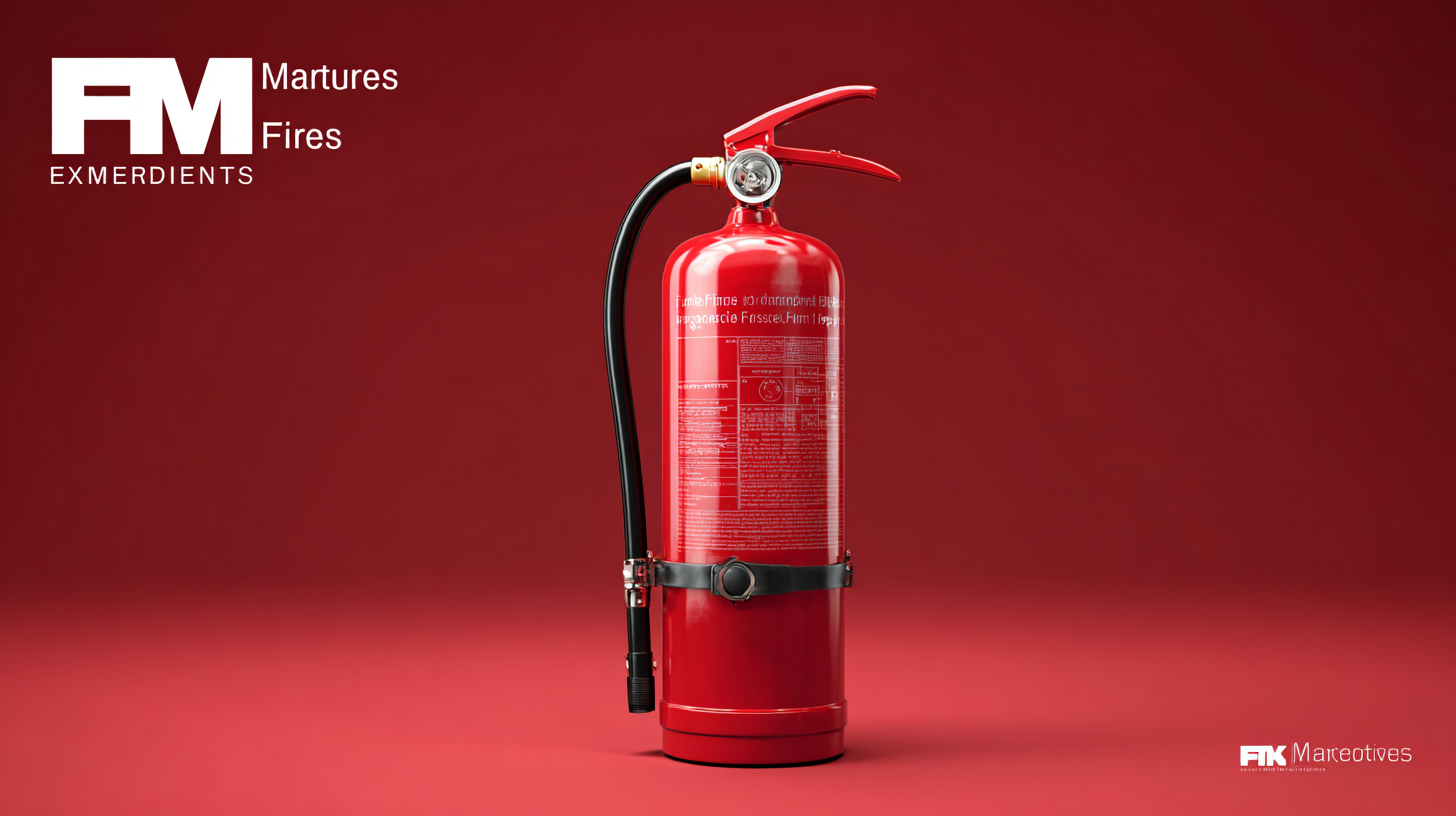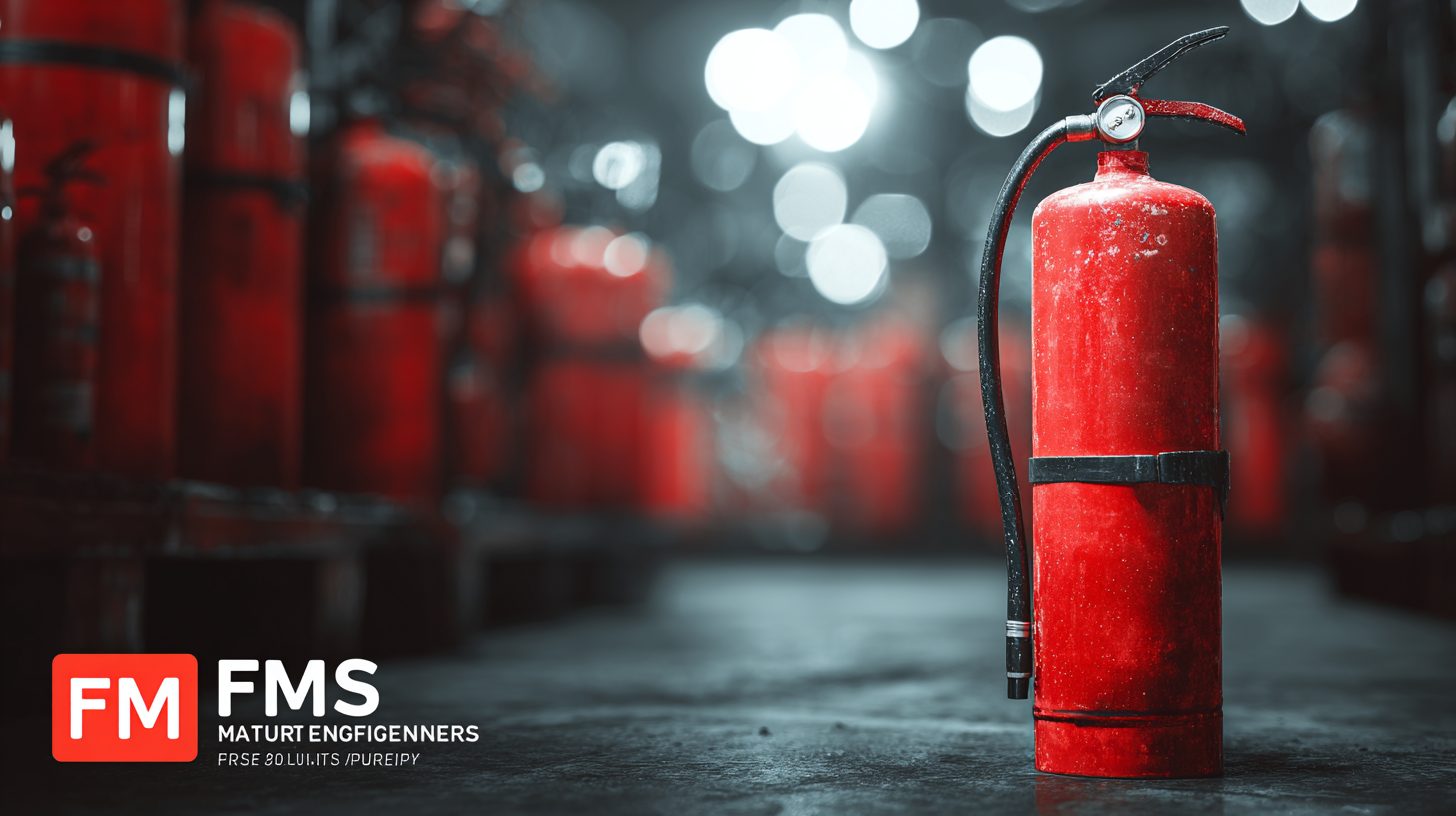Future Market Insights for Best Fire Extinguisher Equipment with 2025 Trends and Expert Tips
 The fire extinguisher equipment market is poised for significant growth as we approach 2025, driven by increasing safety regulations and the rising awareness of fire hazards across residential, commercial, and industrial sectors. According to a recent market analysis by Future Market Insights, the global fire extinguisher equipment market is expected to reach USD 4.5 billion by 2025, expanding at a CAGR of approximately 6% during the forecast period.
The fire extinguisher equipment market is poised for significant growth as we approach 2025, driven by increasing safety regulations and the rising awareness of fire hazards across residential, commercial, and industrial sectors. According to a recent market analysis by Future Market Insights, the global fire extinguisher equipment market is expected to reach USD 4.5 billion by 2025, expanding at a CAGR of approximately 6% during the forecast period.
As organizations prioritize fire safety measures, investments in more advanced and efficient suppression systems are becoming imperative. This blog will explore the latest trends influencing the fire extinguisher equipment industry, backed by expert insights and practical tips for stakeholders looking to stay ahead in this evolving landscape. By understanding these trends and leveraging the right strategies, businesses can enhance their fire safety protocols and mitigate potential risks effectively.
Industry Applications of Fire Extinguishers: Key Sectors and Use Cases
Fire extinguishers play a crucial role across various industries, ensuring safety and compliance in environments prone to fire hazards. In the manufacturing sector, for instance, the presence of flammable materials necessitates the deployment of fire extinguishers that are specifically designed to combat different types of fires. Class A extinguishers, which are effective against ordinary combustibles, and Class B extinguishers, suitable for flammable liquids, are commonly found in these settings. Regular training and maintenance are key to ensuring that staff can respond effectively in emergencies, highlighting the importance of integrating fire safety practices into the culture of industrial workplaces.
In the hospitality industry, fire extinguishers serve not only as essential safety tools but also as legal requirements. Hotels and restaurants, where large numbers of people gather and where cooking operations often present unique fire risks, must be equipped with a range of extinguishers. Regular inspections are mandated, and staff training sessions should be conducted to familiarize employees with the types of extinguishers available and their specific uses. Moreover, locations such as hospitals and educational institutions also require strategically placed extinguishers, ensuring quick access in the event of a fire emergency. Emphasizing tailored solutions and accessibility is vital across all sectors to enhance fire safety and operational resilience.
Future Market Insights for Best Fire Extinguisher Equipment with 2025 Trends and Expert Tips
| Sector | Use Case | Type of Fire Extinguisher | Market Trend (2025) | Expert Tip |
|---|---|---|---|---|
| Commercial | Office Buildings | ABC Extinguishers | Increasing adoption of smart extinguishers | Regular training for employees on usage |
| Industrial | Manufacturing Plants | CO2 Extinguishers | Enhanced focus on eco-friendly options | Conduct risk assessments regularly |
| Residential | Home Safety | Water Mist Extinguishers | Increase in home automation integration | Educate family members on fire safety |
| Transportation | Vehicles and Aircrafts | Dry Powder Extinguishers | Growth in regulations for safety equipment | Ensure extinguishers are easily accessible |
| Healthcare | Hospitals and Clinics | Class K Extinguishers | Shift towards portable and lightweight options | Regularly inspect and maintain equipment |
Common Problems Encountered with Different Types of Fire Extinguishers
When selecting the right fire extinguisher, users often encounter specific challenges based on various types of extinguishing agents. For instance, water-based extinguishers, while effective for Class A fires involving ordinary combustibles, can pose hazards if used on electrical or flammable liquid fires. A common issue arises when individuals mistakenly grab a water extinguisher for an emergency, leading to ineffective fire suppression and potential escalation of the situation.
Another prevalent problem is the confusion surrounding powder extinguishers, which are suitable for multiple classes of fires but can leave a messy residue. This residue may damage sensitive electronic equipment, causing concern for businesses that rely on such devices. Users may also find it challenging to determine the correct extinguisher type in emergencies, as labels and color codes can be misunderstood. Proper training is essential to ensure that responders can quickly identify the right equipment and act accordingly, minimizing risk and damage.
Moreover, CO2 extinguishers, effective on electrical fires, can create additional problems due to their low visibility and short discharge duration, which may leave users unprepared. This highlights the importance of educating personnel on fire extinguisher maintenance and operation, ensuring they grasp the strengths and limitations of each type, ultimately fostering a safer environment.
Trends Shaping the Fire Extinguisher Market: Insights for 2025 and Beyond
As we approach 2025, trends in the fire extinguisher market are evolving to meet the demands of an increasingly safety-conscious society. The projected growth of the global fire protection system market—projected to expand from $71.97 billion in 2025 to $111.38 billion by 2032—indicates a rising awareness of fire safety measures. Innovations in extinguisher technology, including smart extinguishers equipped with IoT connectivity, are becoming essential tools for businesses and households alike. These advancements aim to enhance early detection and response capabilities, ultimately reducing the risk of fire-related incidents.

To stay ahead in this evolving market, consider these expert tips:
- First, invest in training for staff on the latest fire extinguisher technologies to ensure effective use in emergencies.
- Second, regularly assess and update your fire safety protocols to include new innovations and comply with industry standards.
- Lastly, incorporate regular maintenance checks into your safety routine to ensure that all equipment is functional and ready for use when needed.
Expert Tips for Selecting the Right Fire Extinguisher for Your Needs
When selecting the right fire extinguisher to meet your specific needs, it is imperative to consider the type of risks you face. Different extinguishers are designed for various classes of fire: Class A for ordinary combustibles, Class B for flammable liquids, Class C for electrical fires, and Class D for specific combustible metals. Assessing the materials present in your environment, such as whether you have flammable liquids or electrical equipment, can guide you towards the most suitable option.
Additionally, size and accessibility play vital roles in your decision-making process. Choose a fire extinguisher that is easy for you to handle, especially in an emergency situation. It’s also essential to ensure that your extinguisher is easily accessible and not obscured by storage or equipment. Regular maintenance checks are crucial; ensure that your extinguisher is serviced annually by a professional to guarantee that it functions correctly when you need it most. Keeping these tips in mind will help you choose a fire extinguisher that is both effective and convenient for your particular needs.

Innovative Features of Modern Fire Extinguishers: Enhancements and Technology
Innovative features in modern fire extinguishers are redefining safety standards and effectiveness in emergency situations. As technological advancements continue to evolve, devices are becoming more efficient, user-friendly, and environmentally conscious. For example, the integration of water mist technology has emerged as a revolutionary method in fire suppression, providing superior coverage while minimizing water damage. Furthermore, the evolution of acoustic fire extinguishers, featuring signal generators that facilitate proactive response measures, represents a significant leap in intelligent firefighting solutions.
To enhance safety awareness, consider the following tips: Always choose extinguishers with features such as ergonomic designs and color-coded classifications—this ensures that proper equipment is on hand when needed. Furthermore, regular maintenance and hydro-static testing of fire extinguishers can significantly increase their reliability and longevity, ensuring they function correctly when an emergency arises. Staying informed about the latest regulations and innovative technologies can keep personal and commercial spaces safer and more prepared for unforeseen events.
Future Market Insights for Fire Extinguisher Equipment Trends (2025)
This bar chart illustrates the projected market share of various types of fire extinguishers in 2025. Portable fire extinguishers are expected to dominate the market due to their versatility and accessibility, followed by mobile units for larger applications. Stationary systems and specialized systems, while crucial, will have a smaller share in the overall market.
